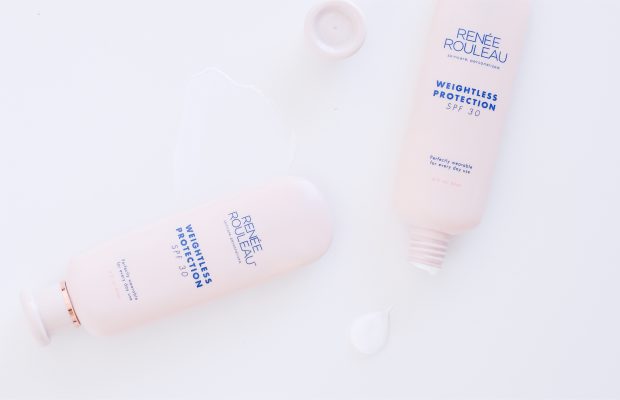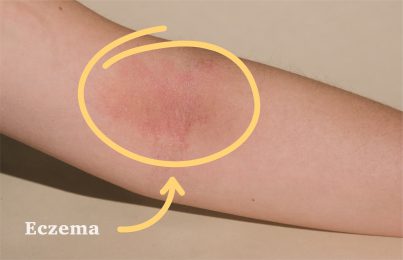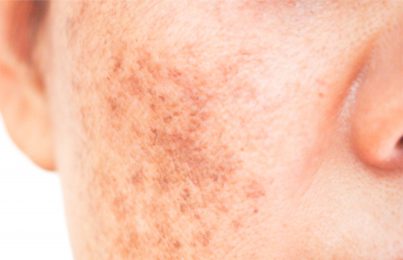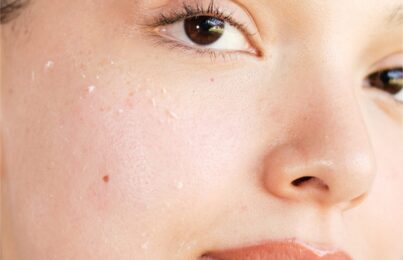Updated: 09/12/22. With so many sunscreens sporting high SPF numbers, it’s only natural to wonder whether or not you’re getting enough protection from the formula you use. In this post, I’ll share some interesting (and surprising!) facts about SPF with the help of board-certified dermatologist Dr. Jeaneen A. Chappell. I’ll also share which SPF value I recommend using to keep your skin adequately protected from damaging UV rays.
What Does the SPF Value Indicate?
First things first. SPF stands for sun protection factor. It’s the ratio of UV light that’s required to produce a sunburn on sun-protected skin compared to unprotected skin. So, SPF 30 allows 1/30th of UVB rays to reach the skin compared to skin that’s not protected. Or, as Chappell puts it, “SPF is a measurement of how much UVB radiation is required to produce minimal redness on SPF-protected skin versus unprotected skin.” It’s quite literally a comparison number.
How Is the SPF Value Determined?
Sunscreen is considered a drug by the Food & Drug Administration (FDA). That means it undergoes rigorous testing to make sure the value that’s listed on the product is accurate.
SPF can be tested in vivo or in vitro. The former refers to testing on living tissue (humans). The latter refers to testing outside of living tissue (such as testing in a petri dish or test tube—something outside of a living subject). The most commonly conducted test method in the world is in vivo. This is where human subjects have SPF applied to their skin and they’re exposed to UV light. The skin is then monitored for signs of redness and burning.
It’s typically done on 10 subjects, all of which have varying skin types. The amount of SPF that’s applied is 2 milligrams per every 1 square centimeter. This is the assumed amount for all SPF testing (this is an important detail; more on this in a minute).
After 15 minutes, the subjects are exposed to UV light over a certain period of time. Once the time period is over, the skin is reviewed for visual cues of redness or burning. Then, the SPF value is calculated. “An SPF number, let’s use 30 for example, means it took 30 times longer to turn red on the SPF 30 side vs the unprotected side,” Chappell explains. “SPF, however, does not measure the amount of time (minutes/hours) you can stay in the sun.”
Does the SPF Value Only Measure UVB Rays?
You might have noticed that the SPF value is only calculated in terms of UVB rays. What about UVA rays? What you need to know is that UVA and UVB rays are different and they can affect the skin differently.
UVA rays are responsible for skin tanning and aging. UVB rays are responsible for skin burning, and they’re a key player in the development of skin cancer. If you want to ensure that your sunscreen protects you from both UVB and UVA rays, look for one that’s labeled as “broad spectrum.”
This means that the sunscreen has gone through in vitro testing for UVA protection. In the United States, that testing is called critical wavelength. It involves testing a sunscreen for how well it diffuses light at 370 nanometers. If it can function at 370 nanometers, it’s considered effective against UVA rays, and it’s going to get a broad-spectrum claim.
Is a Higher SPF Value Always Better?
Many people are under the assumption that a higher SPF value is always better, but that’s simply not the case. According to Chappell, “the difference between SPF 30 and 100 is 97 vs. 99% UV blockage.” In other words, SPF 30 will provide you with 97% protection. SPF 100 will only provide you with 2% more protection. That goes to show that it’s not really about the SPF value. Instead, it’s all about how generously you’re applying your sunscreen (and how often you’re re-applying it, too).
That’s why I recommend using an SPF 30, like Weightless Protection SPF 30. I use this sunscreen every single day. It’s lightweight and it doesn’t clog pores, so it’s easy to apply generously and touch up throughout the day. Make sure you know how much to apply to your face and neck!
It’s worth noting that the SPF value that’s listed on sunscreen is given under the assumption that you’re applying the amount that was tested (2 milligrams per every 1 square centimter). If you’re not applying that amount, it’s possible you’re getting less protection than you think. “In the real world, people typically aren’t applying SPF thick enough to achieve those lab values, especially when considering application technique (thin vs thick, proper reapplication), weather conditions (shade vs high altitude skiing), and the time of day (strength of UV radiation at 8 AM vs 1 PM),” Chappell says.
It just goes to show—the more generous you are with sunscreen application, the better!
What About Visible Light?
Visible light, like blue light, is light we can see. It’s a different wavelength than UVA and UVB, and while there’s not a whole lot of data on how it affects the skin over time, we know that it can cause hyperpigmentation and worsen conditions like melasma. We also know that iron oxides found in makeup and other tinted products can protect against it. That’s one of the reasons why I recommend wearing makeup every single day!
The Bottom Line
Wearing sunscreen every day is critical for healthy skin aging. I always say it, but it bears repeating: sunscreen is the best anti-aging product there is! If you’re applying it generously and reapplying it every two hours when you’re in the sun, an SPF 30 will adequately protect your skin from damaging UV rays. What’s most important is finding a sunscreen you like the texture of and will wear daily. So no matter what time of year it is or what the weather is like outside, make sure you’re wearing your sunscreen!
Next, avoid these five mistakes that could be making your sunscreen less effective.
Celebrity Esthetician & Skincare Expert
As an esthetician trained in cosmetic chemistry, Renée Rouleau has spent 35 years researching skin, educating her audience, and building an award-winning line of products. Her hands-on experience as an esthetician and trusted skin care expert has created a real-world solution — products that are formulated for nine different types of skin so your face will get exactly what it needs to look and feel its best. Trusted by celebrities, editors, bloggers, and skincare obsessives around the globe, her vast real-world knowledge and constant research are why Marie Claire calls her “the most passionate skin practitioner we know.”




Comments:
How can I reapply sunscreen during the day if I apply foundation on top of first layer and set it with powder?
Posted By: Natalia |
Great question, Natalia! Sunscreen degrades only with direct contact to sunlight so unless you are out directly in the sun, there is no need to reapply. If you’d like to ensure your skin is protected, your best bet is to do a light dusting of SPF-containing mineral powder throughout the day.
Posted By: Renée Rouleau |